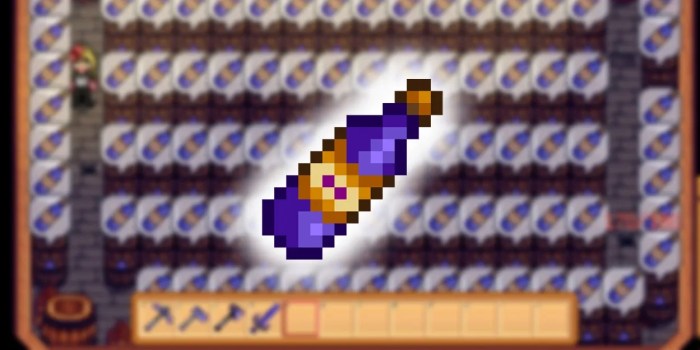Live in a Village in Minecraft, a comprehensive guide to thriving in the heart of a Minecraft community. From designing your perfect village layout to mastering resource management, trading strategies, and defense mechanisms, this guide explores everything you need to know for a successful, sustainable, and captivating Minecraft village experience.
This in-depth look will cover everything from the initial planning of your village’s design to the complex challenges of resource management, trading, and defense. We’ll explore various Minecraft versions, comparing and contrasting their features and gameplay to offer the most up-to-date information possible.
Village Design and Features
Minecraft villages are vibrant hubs of activity, offering a blend of residential and commercial structures. They serve as crucial locations for players seeking resources, trading opportunities, and a glimpse into the game’s unique social fabric. Their intricate layouts, varying building types, and unique inhabitants make them fascinating aspects of the Minecraft world.Villages are carefully crafted settlements with a diverse range of structures and inhabitants, reflecting the different roles and needs of the community.
Their layouts are often influenced by the surrounding environment, adapting to the resources available. Understanding these features allows players to effectively utilize the resources and structures within these settlements.
Typical Village Layout
Villages are typically organized around a central area, often featuring a well-maintained common space. This central area is usually surrounded by residential and commercial buildings, with the layout varying slightly from one village to another. Homes, shops, and other facilities are strategically placed, reflecting the practical needs of the village community.
Types of Buildings
Villages contain a variety of buildings, each serving a specific function. These include homes, farms, shops, and even specialized structures like blacksmiths and stables. The variety of buildings provides different purposes and functions within the village, reflecting the economic and social needs of the community.
- Homes: These are the residential structures where villagers live. They typically consist of multiple rooms, reflecting the needs of the villagers who inhabit them.
- Shops: These are commercial establishments where villagers trade resources and goods. Shops often display their stock prominently, allowing for easy identification of available items.
- Farms: Villages frequently include farms, where villagers cultivate crops and raise livestock. The size and layout of these farms often reflect the amount of resources available.
- Blacksmiths: These specialized buildings offer tools and armor crafting services, playing a vital role in the economic fabric of the village.
- Stables: These structures provide housing for livestock, an integral part of village farming operations.
Unique and Uncommon Structures
While the common buildings are consistent across different villages, there are also unique structures that are less frequent. These structures can include extra shops, more extensive farms, or other facilities not as commonly found in other villages. These unusual structures highlight the dynamic nature of village design and the potential for variety within a single Minecraft world.
Living in a village in Minecraft can be surprisingly peaceful, a stark contrast to the chaotic adventures often sought. Thinking about the cozy community aspect, I’ve been pondering how it relates to astrological concepts like isik kural moon in gemini, isik kural moon in gemini. Perhaps the village’s harmonious vibe reflects a similar inner peace. Ultimately, the charm of a Minecraft village is still undeniable.
Villager Roles
Villagers within a village play various roles. Farmers cultivate crops, traders exchange resources, and artisans craft items. Each role contributes to the overall functioning of the village economy, reflecting the interdependent nature of the community.
Village Layout Comparisons Across Versions
Minecraft’s village designs have evolved across different versions. Early versions often featured simpler layouts with fewer variations. Later versions saw the introduction of more complex and detailed village structures, with improved variety and functionality. This evolution reflects the increasing complexity and detail of the game’s design.
Resources Found in Villages, Live in a Village in Minecraft
Villages are often rich in resources, providing players with a readily available source of materials. Villagers often have supplies in their shops, making trading and gathering resources more efficient.
Challenges and Dangers
Living in a Minecraft village, like in any settlement, can present challenges. Potential dangers include raids by hostile mobs, which can disrupt the village’s peace and security.
Living in a Minecraft village is surprisingly peaceful, even if the villagers are a little… well, repetitive. It’s a stark contrast to the vibrant energy of music videos, like the one where Diplo directs a Funk Carioca Doc, diplo directs funk carioca doc. Still, building a cozy home and cultivating crops in the village feels strangely fulfilling, a nice escape from the digital noise.
I’m definitely sticking with the village life for now.
Optimized Village Layout for Farming
To optimize a village for farming, focus on the placement of farms near sources of water and fertile soil. The positioning of homes and shops can be strategically adjusted to maximize the efficiency of the farms and the overall functionality of the village.
Living in a Minecraft village is surprisingly detailed. You need to consider the villagers’ needs, which often involve food. Figuring out how much energy those meals provide, especially when you’re trying to balance your villagers’ dietary needs, might involve converting kilojoules to calories. Luckily, there are handy tools available, like this one to Convert Kilojoules to Calories , that can help you with these calculations.
It’s a crucial part of ensuring your village thrives and the villagers stay healthy.
Optimized Village Layout for Mining
For a mining-focused village, prioritize proximity to ore veins and establish clear pathways for mining operations. Consider establishing a central storage area for mined resources and incorporating blacksmiths to craft tools and armor.
Optimized Village Layout for Trading
For a trading-focused village, ensure access to a variety of resources, such as crops, livestock, and materials. The placement of shops should be strategically located to maximize trading opportunities.
Village Building Types and Features
| Building Type | Common Features |
|---|---|
| Homes | Multiple rooms, beds, chests |
| Shops | Displays of goods, trade tables |
| Farms | Crops, livestock, water sources |
| Blacksmiths | Anvil, crafting tables |
| Stables | Space for livestock, storage |
Resource Management and Farming
Resource management is paramount for survival in a Minecraft village, especially when the goal is long-term sustainability. Efficient farming is not just about immediate food production; it’s about establishing a reliable and consistent food supply that adapts to the village’s needs. This involves carefully planning the use of resources, maximizing yields, and adapting strategies to changing conditions. This section will detail crucial aspects of farming in a Minecraft village, from cultivating crops to managing livestock.
Importance of Resource Management
Resource management in a Minecraft village involves a careful balance between acquiring resources, crafting tools, and utilizing them effectively for farming and building. This holistic approach ensures that the village doesn’t deplete resources faster than they can be replenished, preventing resource scarcity and fostering long-term prosperity.
Efficient Farming Techniques
Maximizing yields in a Minecraft village necessitates the implementation of efficient farming techniques. These techniques encompass optimizing planting schedules, managing water resources, and employing appropriate crop varieties. Utilizing fertile land, strategically placed water sources, and the right tools is crucial for consistent high yields.
- Crop Rotation: Rotating crops can replenish the soil’s nutrients, minimizing the need for fertilizers and maximizing yield over time. Alternating legumes with other crops, for example, can greatly improve soil quality. This is similar to agricultural practices in the real world.
- Automated Farming: Employing mechanisms like automatic watering systems or automated harvesting tools can significantly reduce the time and effort needed for farming. This allows villagers to focus on other tasks and maintain productivity.
- Utilizing Terrains: Different terrains offer different growing conditions. Understanding these conditions will allow for choosing appropriate crops and techniques to maximize yield. For instance, sloped land can be terraced to maximize usable space.
Cultivating Different Crops
Cultivating various crops in a Minecraft village requires knowledge of their specific needs and growth patterns. Different crops have varying growth times, sunlight requirements, and water needs. This detailed understanding is essential for successful cultivation and consistent food production.
- Wheat: Wheat is a staple crop. It requires water, and sunlight to grow. It’s crucial for bread production, a vital part of a balanced diet. Growing wheat in multiple areas can ensure a constant supply.
- Carrots and Potatoes: These root vegetables have similar requirements to wheat, and they’re essential for nutrition. Proper spacing and consistent watering are key to a successful harvest.
- Sugarcane: Sugarcane requires lots of water and sunlight. It’s an important ingredient for sugar, used in various recipes.
Establishing a Sustainable Food Supply
Establishing a sustainable food supply in a Minecraft village requires a multi-faceted approach, encompassing crop diversification, livestock management, and storage. This approach mirrors real-world agricultural strategies for long-term food security.
- Variety: A diverse range of crops and livestock will ensure a varied and balanced diet, mitigating the risks associated with relying on a single food source.
- Storage: Implementing robust storage solutions, like chests and storage rooms, will prevent food spoilage and ensure a consistent food supply throughout the year.
Farming Techniques Comparison
| Technique | Yield (per cycle) | Effort | Resource Requirements |
|---|---|---|---|
| Basic Farming | Low | High | Minimal |
| Advanced Farming | Medium | Medium | Moderate |
| Automated Farming | High | Low | High |
Crafting Farming Tools and Equipment
Crafting tools and equipment for farming is essential for efficiency. This involves gathering resources, crafting tools, and using them effectively for farming.
- Tools: Tools like hoes, shovels, and axes are necessary for cultivating crops and clearing land.
- Water Sources: Ensuring access to water sources (lakes, rivers, or water buckets) is vital for irrigation. Real-world irrigation techniques can be adapted to the Minecraft environment.
Challenges in Maintaining Crops and Livestock
Maintaining crops and livestock in a village comes with inherent challenges. These challenges involve pest control, disease prevention, and environmental factors.
- Pest Control: Insects and other pests can damage crops, requiring preventative measures to protect harvests. Similar pest control measures exist in real-world agriculture.
- Disease Prevention: Livestock can suffer from diseases. Implementing preventative measures, like regular checks and vaccinations, will minimize losses.
Best Farming Locations
Identifying the best farming locations is critical. This depends on terrain, resources, and accessibility. Optimal locations are characterized by consistent sunlight, proximity to water sources, and fertile soil.
- Fertile Plains: These areas are usually ideal for growing crops due to their soil quality and abundance of sunlight.
- River Valleys: These areas offer a consistent water supply, which is essential for irrigation.
Trading and Economy
Villager trading is a cornerstone of Minecraft’s economy, a dynamic system where players can exchange resources for profit. This system is deeply integrated into the village structure, influencing how resources flow and how players interact with the environment. Understanding villager trading is crucial for long-term survival and prosperity in a Minecraft village.The villager trading system in Minecraft is a sophisticated mechanism that allows players to acquire rare items, crafting materials, and resources by exchanging goods with villagers.
Each villager has a specific set of trades, and the availability and prices of these trades can fluctuate based on various factors. Understanding this intricate system can greatly enhance your Minecraft experience, allowing you to efficiently gather resources and craft items.
Villager Trades
Villagers offer a wide array of trades, ranging from basic necessities to rare and valuable items. This diverse selection allows for a dynamic economy within the village. The trades are not static; they change over time, providing an element of unpredictability and requiring players to adapt their strategies.
Types of Traded Items
A variety of items are traded in Minecraft villages. These range from common materials like wood, stone, and iron to more specialized items like enchanted tools, armor, and food. The availability and price of these items depend on the specific villager and the time of day.
Successful Trading Strategies
Successful trading strategies in Minecraft villages involve understanding the villager’s trades, their demands, and the supply and demand dynamics. Players need to carefully evaluate the current prices and available items to maximize their profits. For example, acquiring large quantities of a high-demand resource can lead to a higher profit margin.
Impact on Village Economy
Trading has a significant impact on the overall economy of a Minecraft village. The exchange of goods and resources between players and villagers creates a dynamic environment where supply and demand influence prices and availability. The overall health of the village economy depends on the balance of trade between villagers and players.
Comparison of Trading Mechanics Across Versions
The villager trading system has evolved across different Minecraft versions. Early versions had a simpler system, while later versions introduced more complex features and mechanisms. The differences lie in the range of items available, the frequency of trade changes, and the overall complexity of the trading interface.
Maximizing Trading Profits
Maximizing profits from trading requires a deep understanding of the villager trading system and a flexible approach to adapting to changing prices. It is crucial to stay informed about the latest trades and the fluctuating prices of items. This allows players to make informed decisions about what to trade and when to trade.
Factors Influencing Item Prices
Several factors influence the prices of traded items in a Minecraft village. These factors include the rarity of the item, the demand for the item, and the supply of the item. Players can often leverage this information to make lucrative trades.
Common Trade Items and Prices
| Item | Price (Approximate) |
|---|---|
| Iron Ingot | 2-4 Cobblestone |
| Emerald | 8-12 Diamonds |
| Enchanted Book | Variable, based on enchantment level |
| Food | Variable, based on type and quantity |
Note: Prices are approximate and can fluctuate. The exact price depends on the specific villager, time of day, and other market conditions.
Defense and Security

A Minecraft village, while idyllic in its initial stages, faces constant threats from hostile mobs. Effective defense is crucial for the long-term survival and prosperity of the community. A well-fortified village not only protects its inhabitants but also fosters a safe environment for trade, farming, and overall village growth.A robust defense strategy encompasses more than just walls. It requires understanding the potential threats, implementing various defensive mechanisms, and potentially even developing advanced systems for long-term security.
This involves proactive measures rather than merely reacting to attacks.
Importance of Defense in a Minecraft Village
A well-defended village is essential for the safety and well-being of its villagers. Protection from hostile mobs, like zombies, skeletons, and creepers, is paramount. This safety fosters a stable environment where villagers can focus on their daily tasks, contributing to the village’s overall prosperity. The absence of constant threat allows for more efficient resource management, enabling the village to grow and expand.
Methods of Protecting a Village from Hostile Mobs
Various methods can be employed to secure a Minecraft village from hostile mobs. These include using walls, traps, and specialized structures to deter attacks and protect villagers. Thorough planning and strategic placement are key to successful defense.
- Walls and Fences: Basic yet effective, walls and fences create a physical barrier to deter mobs. Different types of walls and fences offer varying levels of protection. Stone walls, for example, are more resistant to damage than wooden fences. Strategic placement, such as incorporating corner towers and gates, enhances the effectiveness of these barriers.
- Traps and Pitfalls: Traps and pitfalls can be strategically placed around the perimeter of the village to inflict damage on hostile mobs. This can deter them from approaching or create an ambush opportunity. Different trap designs can be created to enhance their effectiveness.
- Defensive Structures: These structures, like watchtowers and moats, provide elevated vantage points and obstacles to hinder mob movement. Their design and placement significantly impact their defensive capabilities.
Construction of Defensive Structures in a Village
Careful planning and execution are essential in constructing defensive structures. The materials used, the layout, and the strategic placement directly influence the structure’s effectiveness. For instance, a tower placed in a vulnerable spot will be less effective than one strategically positioned to cover a key entrance.
- Watchtowers: Elevated structures, like watchtowers, provide a clear view of the surrounding area. They allow for early detection of approaching mobs, enabling proactive defense. Multiple towers in strategic locations enhance the overall defense system.
- Moats: Moats, deep trenches filled with water, create a significant obstacle for land-based mobs. This water barrier slows their progress and can be further fortified with structures placed on the edge.
- Gates and Portcullises: Gates and portcullises control access to the village. They can be used in conjunction with other defenses to restrict mob movement and allow for targeted defense.
Role of Villagers in Defending the Village
Villagers, while primarily focused on their daily tasks, can contribute to the village’s defense. Equipping them with appropriate tools and armor and assigning them specific defensive roles can enhance the village’s overall security. For instance, training them as archers can be effective in deterring attacking mobs.
Common Threats to a Minecraft Village
Zombies, skeletons, and creepers are common threats to Minecraft villages. Other threats, like raiders and pillagers, pose significant challenges, requiring more advanced defensive strategies.
Advanced Defensive Systems for a Village
Advanced defensive systems incorporate more sophisticated mechanisms to protect the village from hostile mobs. These systems may include automated trap systems, projectile defenses, or even advanced crafting setups to create specialized items.
- Automated Trap Systems: Using redstone mechanisms, automated traps can be set up to inflict damage on approaching mobs. These traps can be placed strategically around the village perimeter.
- Projectile Defenses: Using items like bows and arrows or specialized mechanisms, villagers can create projectile defenses. These defenses can deter attacking mobs from entering the village.
- Advanced Crafting Systems: Specialized crafting setups allow for the creation of stronger armor, weapons, and defensive items. These can significantly enhance the village’s overall defense.
Fortress-like Structure to Defend a Village from External Attacks
A fortress-like structure can serve as a central defensive hub for the village. It would incorporate multiple layers of defense, including walls, towers, and traps, designed to withstand prolonged attacks. This central structure acts as a last line of defense, protecting the village’s core resources and inhabitants.
Comparison of Defensive Structures
| Defensive Structure | Effectiveness | Pros | Cons |
|---|---|---|---|
| Walls | Moderate | Simple to construct, inexpensive | Can be breached by large groups of mobs |
| Watchtowers | High | Provides early warning, strategic placement | Can be targeted by mobs, vulnerable to siege |
| Moats | High | Significant barrier to land-based mobs | Difficult to maintain, can be bypassed |
Village Building and Expansion: Live In A Village In Minecraft

Building a thriving Minecraft village involves more than just placing houses. It’s about creating a cohesive and visually appealing community, considering aesthetics, functionality, and long-term maintenance. This section delves into the process of building and expanding a village, emphasizing design choices, material selection, and the importance of a well-balanced layout.
Village Layout and Expansion
A well-structured village layout is crucial for both aesthetics and functionality. A central marketplace, surrounded by residential areas and workshops, provides a clear flow and encourages interaction between villagers. As the village grows, consider expanding outwards in a planned manner, maintaining a clear and visually appealing boundary. This could involve creating interconnected paths, adding new districts for specialized functions (e.g., a farming district, a crafting district), and keeping in mind the terrain and resources available.
Proper spacing and placement of buildings are key to a visually appealing and practical village.
Visual Appeal and Decoration
Attracting attention and inspiring a sense of wonder requires careful consideration of visual elements. The placement of trees, flowers, and decorative items plays a vital role in creating a visually appealing village. Strategic placement of items such as torches, banners, and decorative blocks creates depth and ambiance, drawing the eye and adding personality to each structure.
Building Materials and Aesthetics
Different building materials offer various aesthetic qualities. Using a mix of materials—wood, stone, brick, glass, and even specialized blocks like stained glass—creates visual interest and texture. Using a consistent style across the village enhances its cohesiveness and appearance. Stone buildings can project a sense of permanence, while wooden structures can convey warmth and charm. A diverse but well-coordinated palette of colors can add a sophisticated touch.
Experimentation with different combinations of materials and colors to find what resonates with the desired aesthetic is key.
Importance of Aesthetics
A visually appealing village is more engaging and enjoyable to explore. A well-designed village not only looks better but also feels more immersive and inviting. It enhances the overall player experience, making the village a destination worth revisiting. Aesthetics are an important aspect of gameplay enjoyment, and careful consideration will improve the village experience.
Challenges of Maintaining a Large Village
Maintaining a large and complex village can present several challenges. Managing resources, maintaining order, and addressing potential conflicts within the community are essential for a thriving settlement. Keeping track of materials and resources as the village grows becomes a crucial aspect of management. Additionally, ensuring a smooth and efficient flow of resources and trade within the village requires careful planning.
A well-organized system for collecting and distributing resources can mitigate these challenges.
Building Styles and Aesthetic Value
| Building Style | Aesthetic Value |
|---|---|
| Medieval | Strong, durable, and imposing aesthetic |
| Modern | Sleek, futuristic, and clean aesthetic |
| Fantasy | Unique and imaginative aesthetic |
| Rustic | Warm and inviting aesthetic |
This table provides a basic overview of different styles. The aesthetic value is subjective and depends on individual preferences. Experimentation and blending of styles can create unique and personalized villages.
Enhancing Village Buildings
Enhancing village buildings involves more than just aesthetics. Adding functional elements like crafting stations, furnaces, and farming areas can improve the overall practicality and usefulness of the buildings. Strategic placement of these functional elements can enhance the efficiency and practicality of the village. Combining aesthetic appeal with functionality creates a well-rounded and enjoyable village.
Challenges and Solutions
Building and maintaining a thriving Minecraft village presents unique challenges, from resource scarcity to maintaining order. This section explores common obstacles and effective strategies to overcome them, offering practical solutions to ensure the village’s long-term prosperity. Resourceful problem-solving is crucial for survival in a village environment, as well as establishing a strong community.Navigating the intricacies of village life often requires adapting to unexpected situations and developing innovative approaches to everyday problems.
Solutions can range from simple adjustments to complex strategies, emphasizing the importance of resourcefulness and adaptability.
Common Village Challenges
Effective village management requires a proactive approach to anticipate and address potential issues. Recognizing common problems allows for preventative measures and optimized resource allocation.
- Resource Scarcity: A lack of essential resources like wood, stone, or food can severely impact a village’s development and stability. This can lead to conflict and hinder progress.
- Maintaining Order and Community: Ensuring harmony and cooperation among villagers requires establishing clear rules, roles, and dispute resolution mechanisms. Failure to do so can lead to unrest and disorganization.
- Defense and Security: Protecting the village from hostile mobs and raiders is paramount. Without adequate defense, the village becomes vulnerable to attack and the community may be forced to disperse.
- Trading and Economic Instability: Maintaining a healthy trading network and a stable economy are essential. Imbalances in trade can disrupt the flow of resources and lead to economic hardship.
Solutions to Common Village Problems
Addressing these challenges requires a multifaceted approach, considering various aspects of village life.
- Resource Management Strategies: Implementing efficient resource gathering and storage systems can help mitigate scarcity. These systems can involve designated areas for gathering, optimized storage solutions, and organized resource distribution. For example, a designated area for woodcutting, strategically placed storage chests, and a system for distributing resources can prevent shortages.
- Community Building: Encouraging cooperation and shared responsibility through clear rules and roles fosters a strong sense of community. Regular meetings and discussions can address conflicts, ensure fairness, and create a sense of belonging.
- Defensive Measures: Fortifying the village perimeter with walls, traps, and strategically placed defenses is critical. Moat, towers, and automated defense systems, can deter attacks and safeguard the community.
- Economic Stability: Maintaining a balanced trading network is key. Implementing fair pricing, diverse trading opportunities, and promoting specialized roles can promote economic stability. This can include setting up specialized workshops for specific goods or establishing trade routes to external settlements.
Resourceful Solutions to Everyday Problems
Implementing effective solutions to everyday problems within the village is crucial for long-term success.
| Problem | Solution |
|---|---|
| Lack of food | Establishing farms, hunting grounds, and fishing spots, as well as exploring different food sources and developing efficient storage. |
| Lack of tools | Crafting tools from readily available resources. Establishing a crafting center for tool creation. |
| Lack of building materials | Collecting resources from the surrounding environment, developing a system for transporting and storing building materials, and optimizing resource extraction techniques. |
| Conflict between villagers | Establishing mediation and conflict resolution mechanisms. Implementing a code of conduct for villagers and encouraging communication. |
Overcoming Resource Scarcity in a Village
Efficient resource management is critical for a thriving village.
Resource scarcity can be overcome by implementing efficient resource gathering, storage, and distribution systems.
Exploring alternative resources and developing specialized roles within the village can help alleviate resource scarcity. Developing specialized roles within the village, such as farmers, builders, and traders, can lead to more efficient resource management and production.
Maintaining Order and Community Within a Village
Maintaining order within a community is vital for its survival and prosperity.Establishing clear rules, responsibilities, and dispute resolution mechanisms can help maintain order. Implementing a system of checks and balances, such as a council of elders or elected officials, can ensure fair practices and prevent conflicts.
Tools and Techniques for Overcoming Challenges
Employing appropriate tools and techniques can significantly improve efficiency and productivity in village management.Effective tools and techniques can streamline tasks, optimize resource allocation, and enhance overall village management. This includes using efficient crafting techniques, utilizing automation where possible, and implementing effective communication strategies.
Final Conclusion
From crafting a beautiful and functional village to overcoming common challenges, this guide equips you with the knowledge and strategies to succeed in your Minecraft village. Mastering resource management, efficient farming, and effective trading are key components to thriving in this unique and engaging Minecraft experience. Whether you’re a seasoned player or just starting your Minecraft village adventure, this guide is your essential companion.




